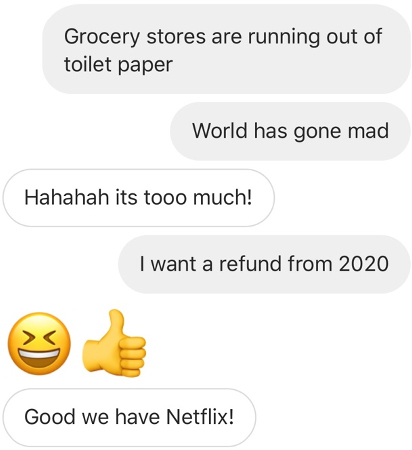In a recent chat with one of my friends, I made reference to the toilet paper crisis of 2020, which for some is eclipsing the real crisis of 2020 – COVID-19.

As you can see, the true hero and provider of comfort, entertainment, and solace is Netflix. Not to be missed is the other top destination – YouTube (it’s neither warm nor exotic, but it’s informative) – acting as a news source for many.
But as many people are on mandatory and voluntary quarantine, locked out from workplaces, gyms, and other public spaces, partaking in social distancing – there’s an impact on the world’s networks.
The unexpected reality of running out of bandwidth when the world is running out of toilet paper and hand sanitizer is an odd thought among all the headlines, but is closer to the truth than some of the fake news out there.
While many companies are instituting an organization-wide, mandatory work from home policy, there is a resulting shift in traffic patterns.
“YouTube is up by more than 10% worldwide” – According to Sandvine’s Phenomena data
So as many of us flock to our various video streaming services – take your pick, there’s plenty to choose from – in the comfort of our pajamas (as we no longer spend 8-10 hours in our respective places of employment), there now becomes a fight for fixed-line bandwidth.
Video streaming during the day will increase people work from home and school kids watch video – YouTube and social video will now be on home networks rather than at work or school networks.

What does this mean? Well, we’re no longer in the office doing low-bandwidth things such as email, instead any household could be competing for gaming or video bandwidth. Ultimately, this could completely rid the concept of peak hours during this crisis, changing the effectiveness of congestion policies and rendering current net neutrality policies irrelevant. Some operators have recognized the supply versus demand in these challenging times and have lifted their caps.
However, as we all try to distract ourselves from the fear of what is happening as borders, businesses, and basic routines come to a grinding halt, network capacity feels its own sense of strain. For us as consumers, it manifests in poor video experience: click-to-play delay, streaming health, and noticeably degraded resolution quality.
As operators remove caps or try to handle the onslaught of traffic, without driving up call center costs, they need a solution focused on delivering a lot with a little. Even in non-crisis times, Sandvine’s Video Phenomena solution solves video experience on networks, where quality of experience (QoE) is balanced against capacity constraints with the goal of delivering fair usage to all.
If you’re interested to know more about the video phenomena, check out our eBook – Avoiding the Stall: An Operator’s Guide to Video QoE.
Topics: Featured Blog Header, Netflix, Featured, Video Streaming, Streaming Video, covid-19





